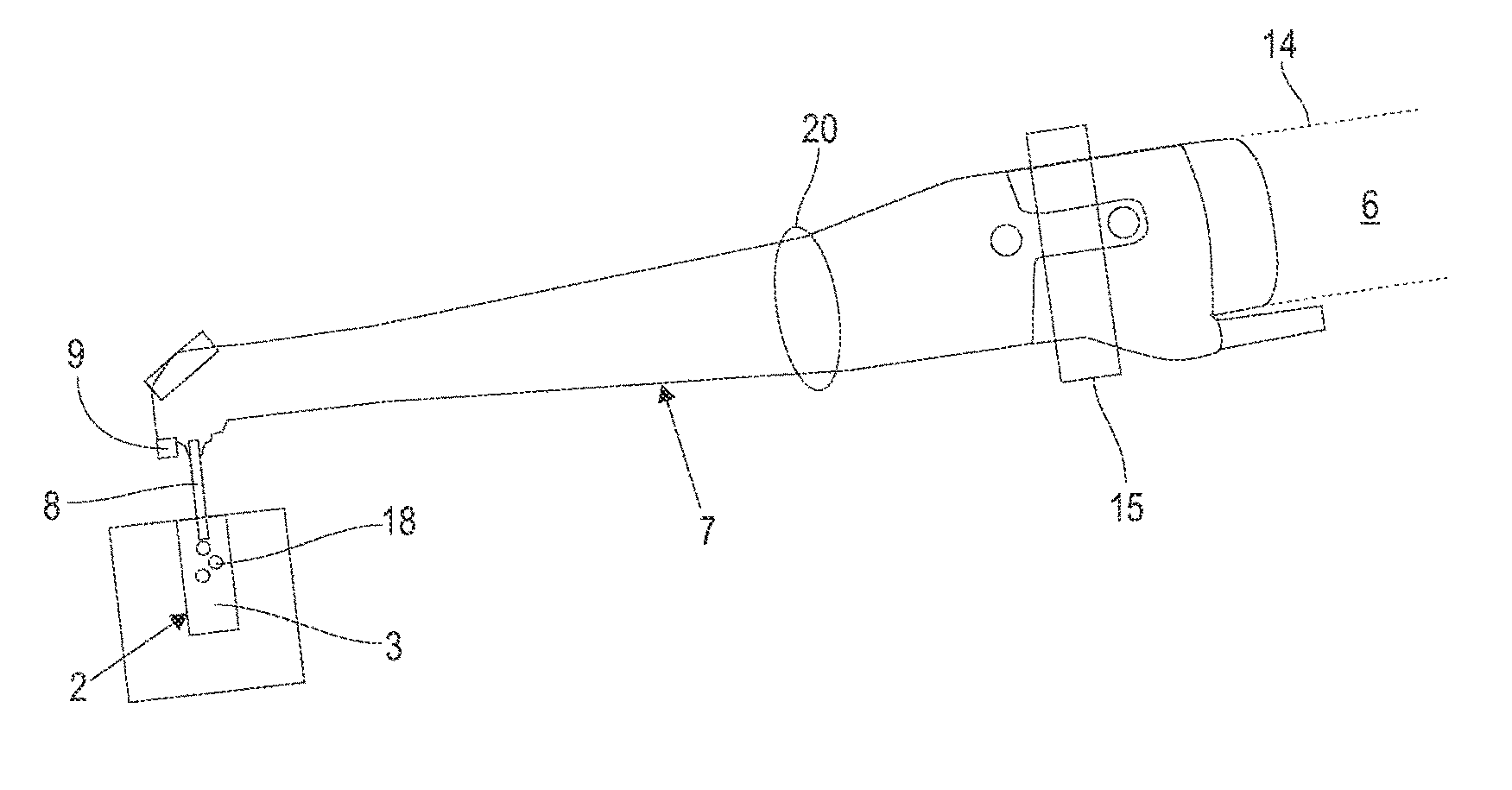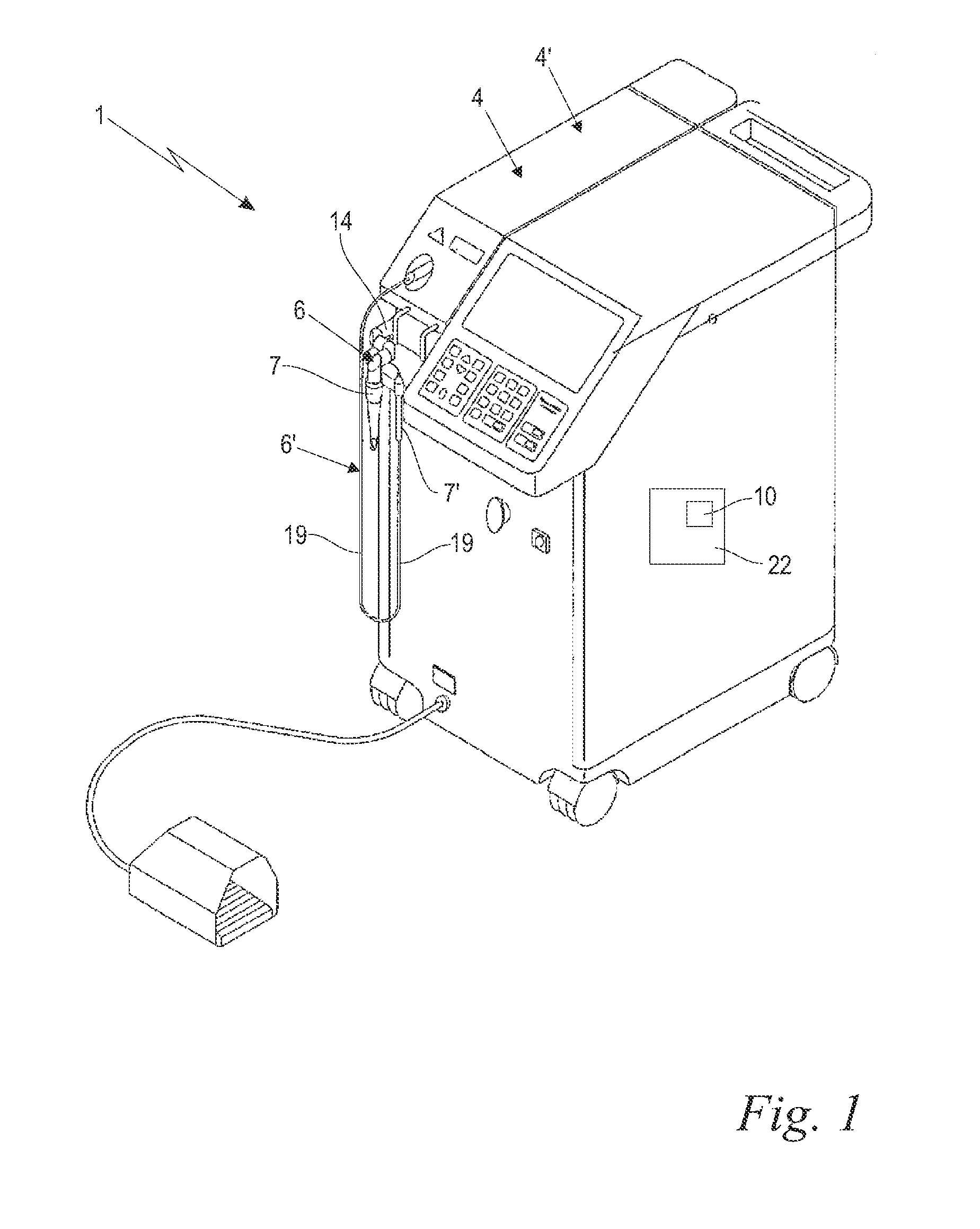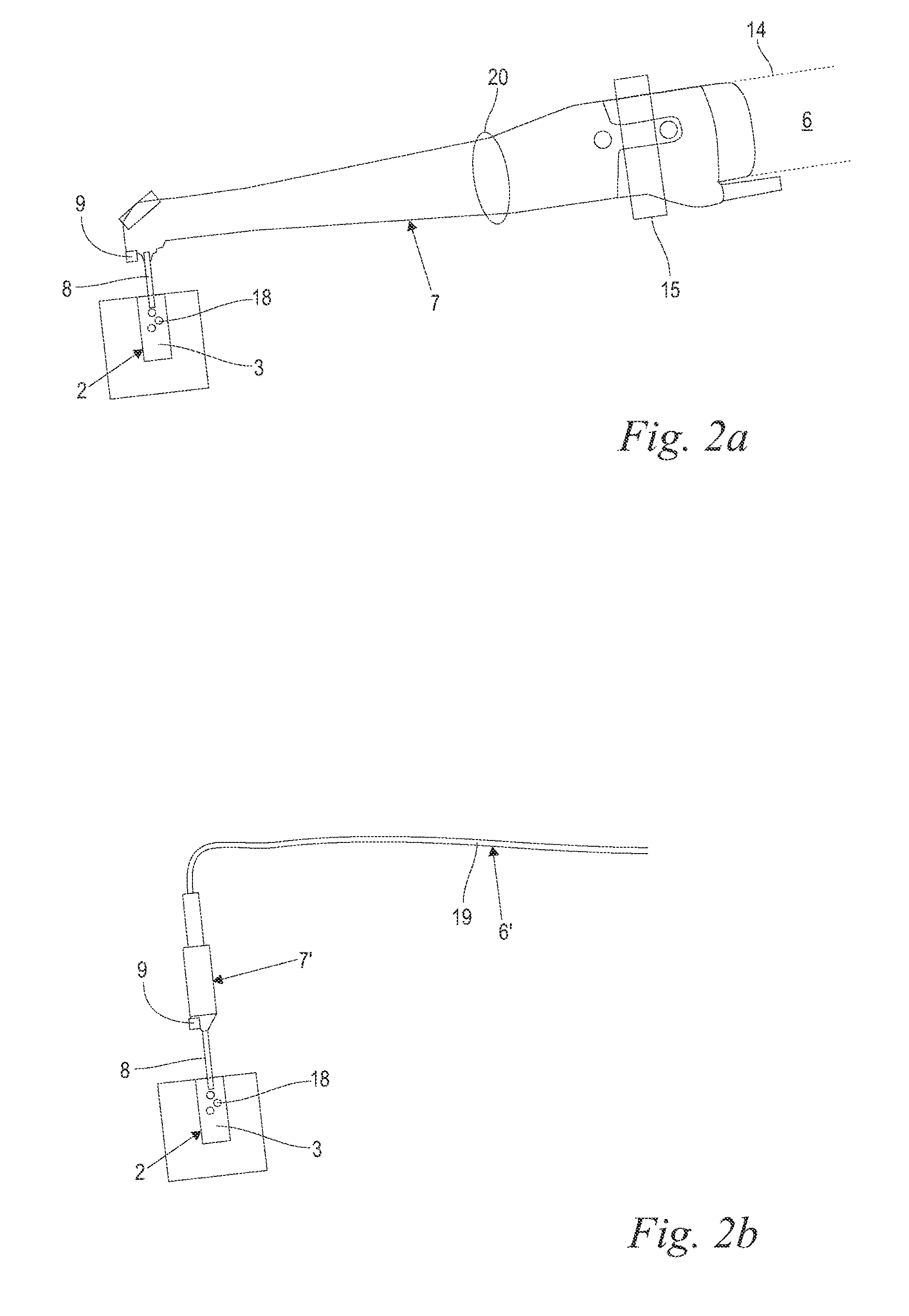Laser system and method for operating the laser system
a laser system and laser technology, applied in the field of laser system for irrigation, can solve the problems of deceleration of tissue regeneration and attachment, reduced inflammatory response, and complex root canal system, so as to reduce the damage of laser damage to tooth pulp, minimize the effect of reducing the damage, and reducing the damage of laser damage to the tooth pulp
- Summary
- Abstract
- Description
- Claims
- Application Information
AI Technical Summary
Benefits of technology
Problems solved by technology
Method used
Image
Examples
Embodiment Construction
[0044]With reference now to FIG. 1, in various embodiments, a medical treatment laser system 1 comprises at least one laser source 4 for generating a laser beam 5 (FIGS. 4a to 6b), and an optical delivery system 6 for the laser beam 5. The laser system further comprises a schematically indicated control unit 22 for controlling the laser beam 5 parameters, wherein the control unit 22 includes again schematically indicated adjusting means 10 for adjusting the laser beam 5 parameters as described below. The optical delivery system 6 preferably includes an articulated arm 14 and a treatment handpiece 7, wherein the laser beam 5 is transmitted, relayed, delivered, and / or guided from the laser source 4 through the articulated arm 14 and the handpiece 7 to a target. The articulated arm 14 might preferably be an OPTOFLEX® brand articulated arm available from Fotona, d.d. (Slovenia). In the shown preferred embodiment a second laser source 4′ and a second optical delivery system 6′ with a sec...
PUM
 Login to View More
Login to View More Abstract
Description
Claims
Application Information
 Login to View More
Login to View More - R&D
- Intellectual Property
- Life Sciences
- Materials
- Tech Scout
- Unparalleled Data Quality
- Higher Quality Content
- 60% Fewer Hallucinations
Browse by: Latest US Patents, China's latest patents, Technical Efficacy Thesaurus, Application Domain, Technology Topic, Popular Technical Reports.
© 2025 PatSnap. All rights reserved.Legal|Privacy policy|Modern Slavery Act Transparency Statement|Sitemap|About US| Contact US: help@patsnap.com



